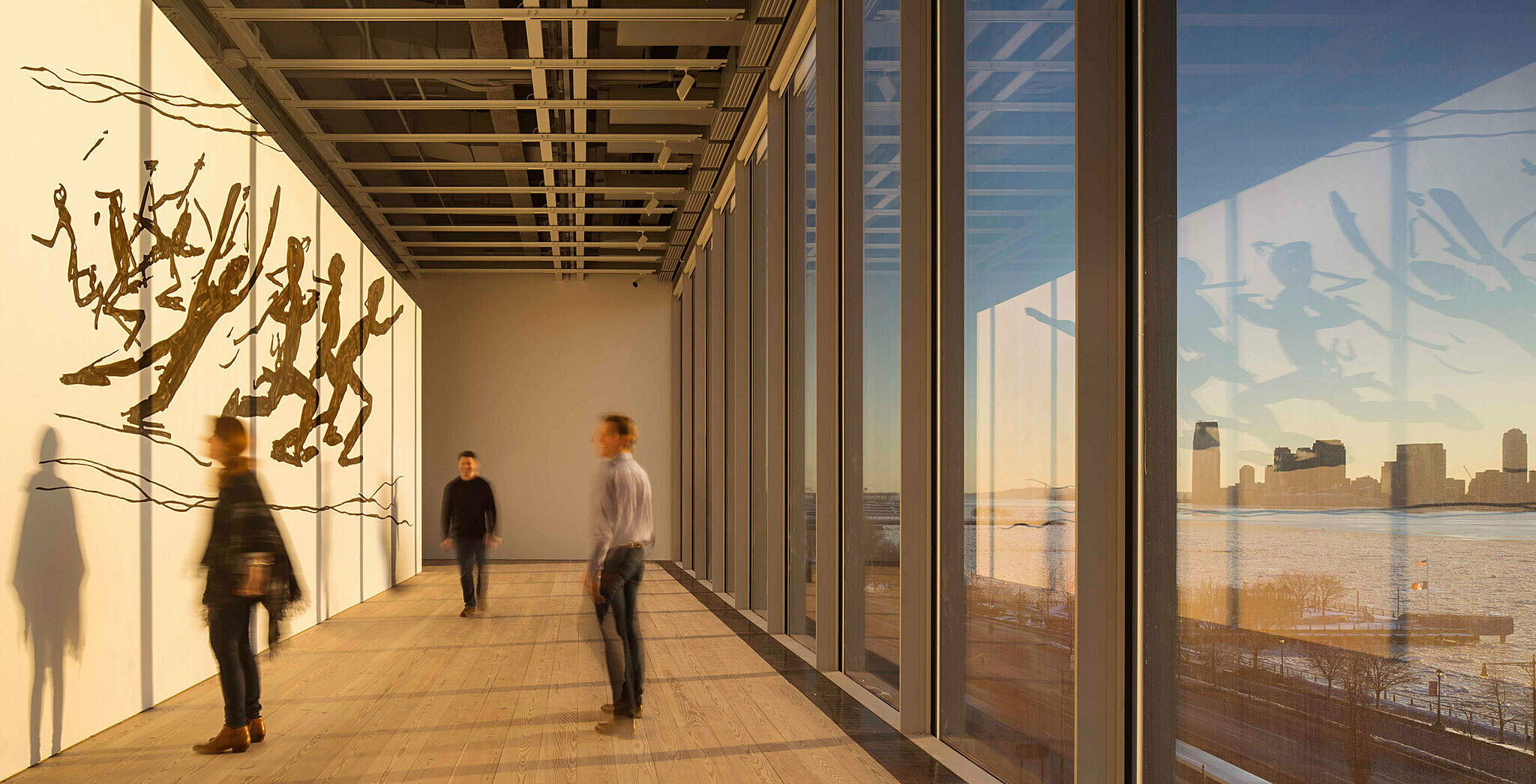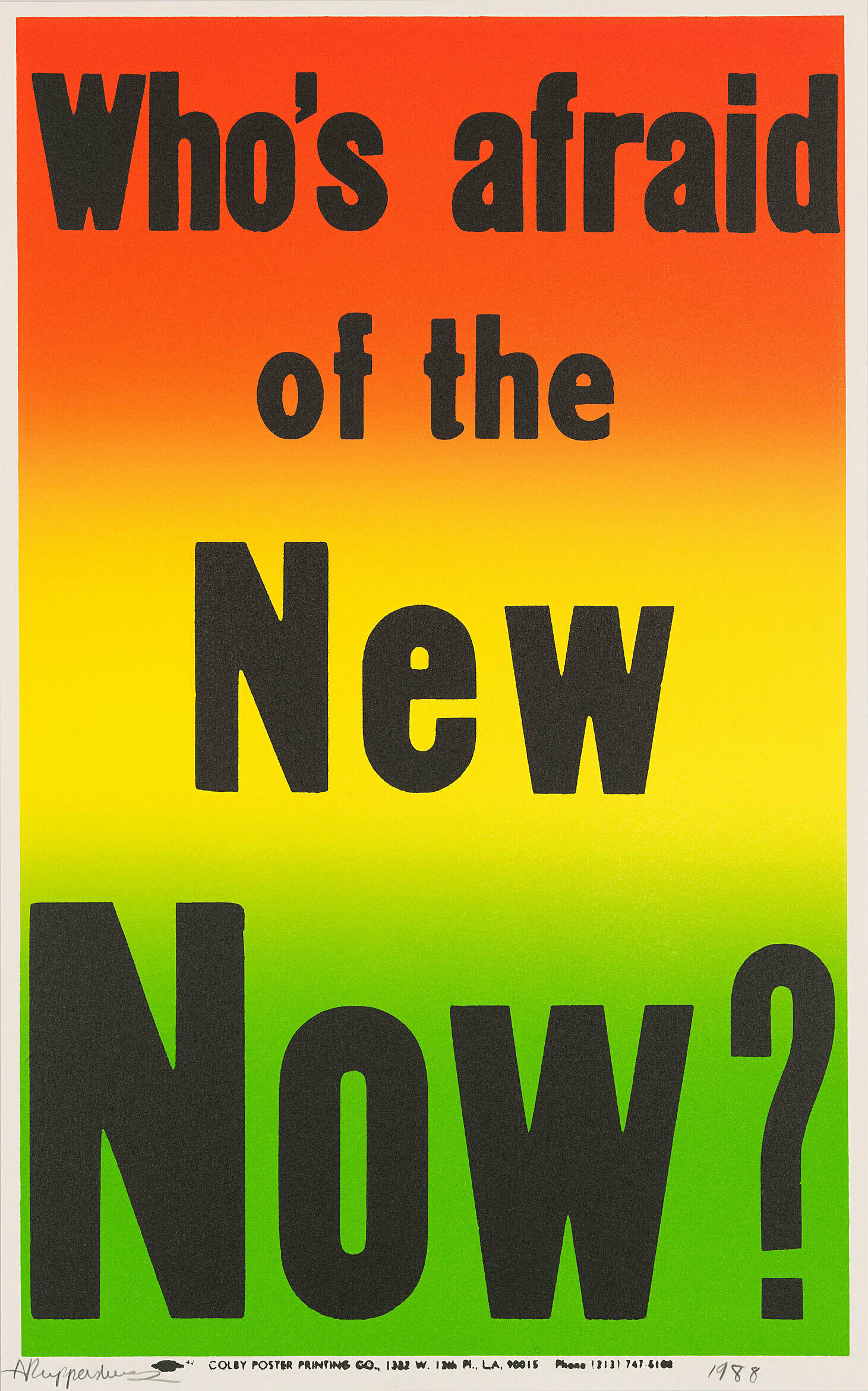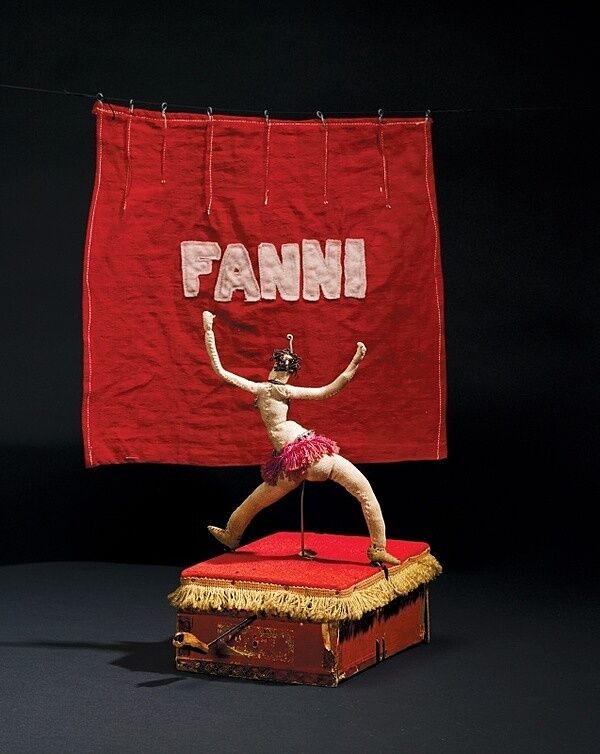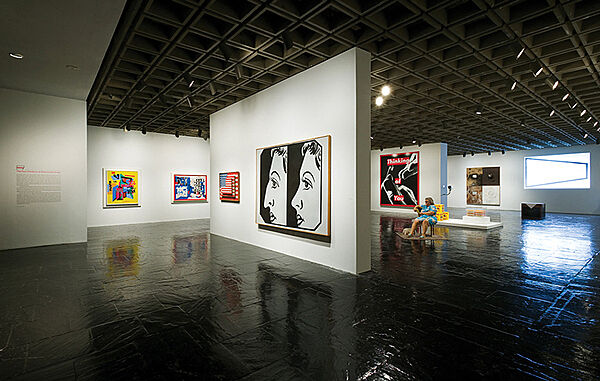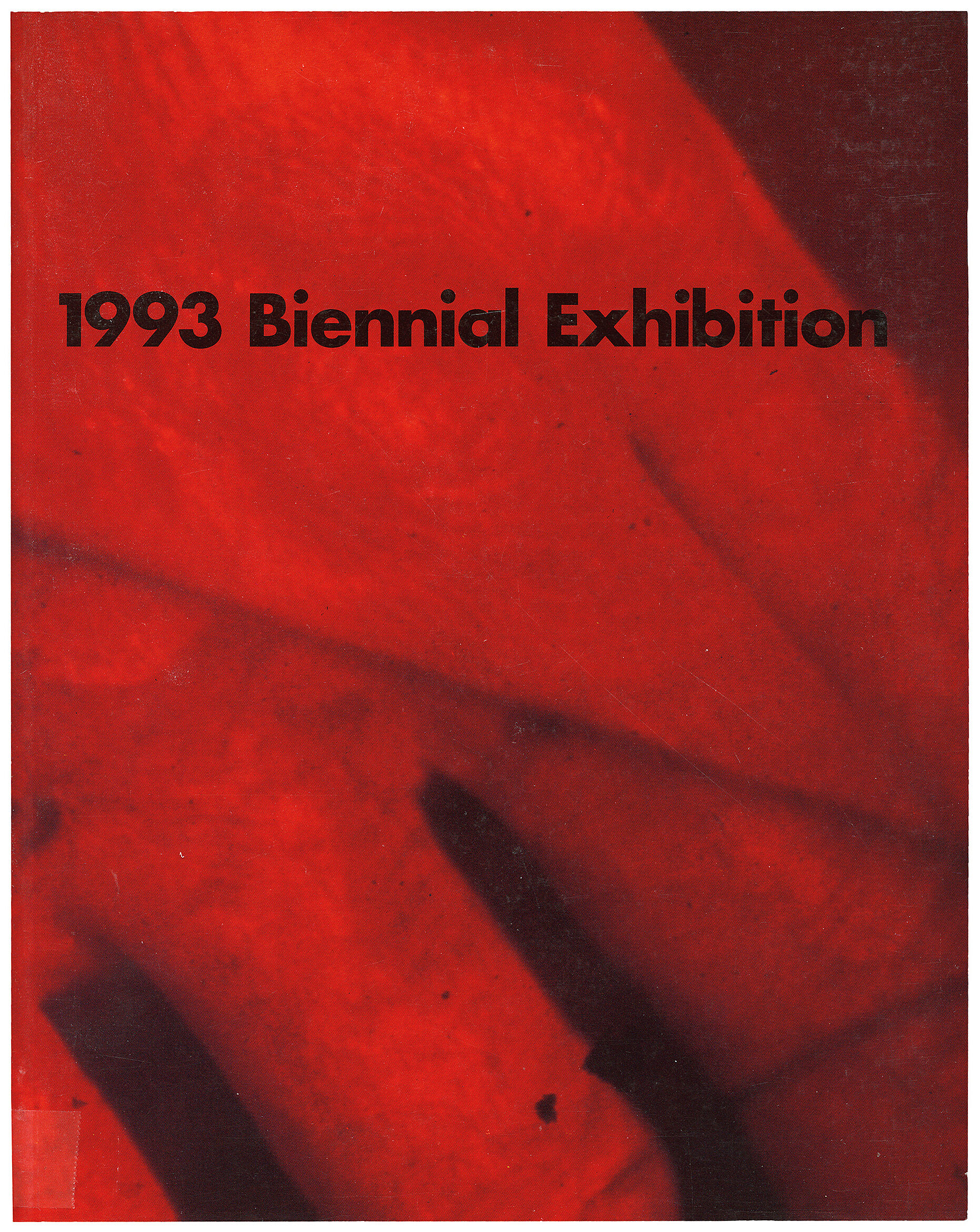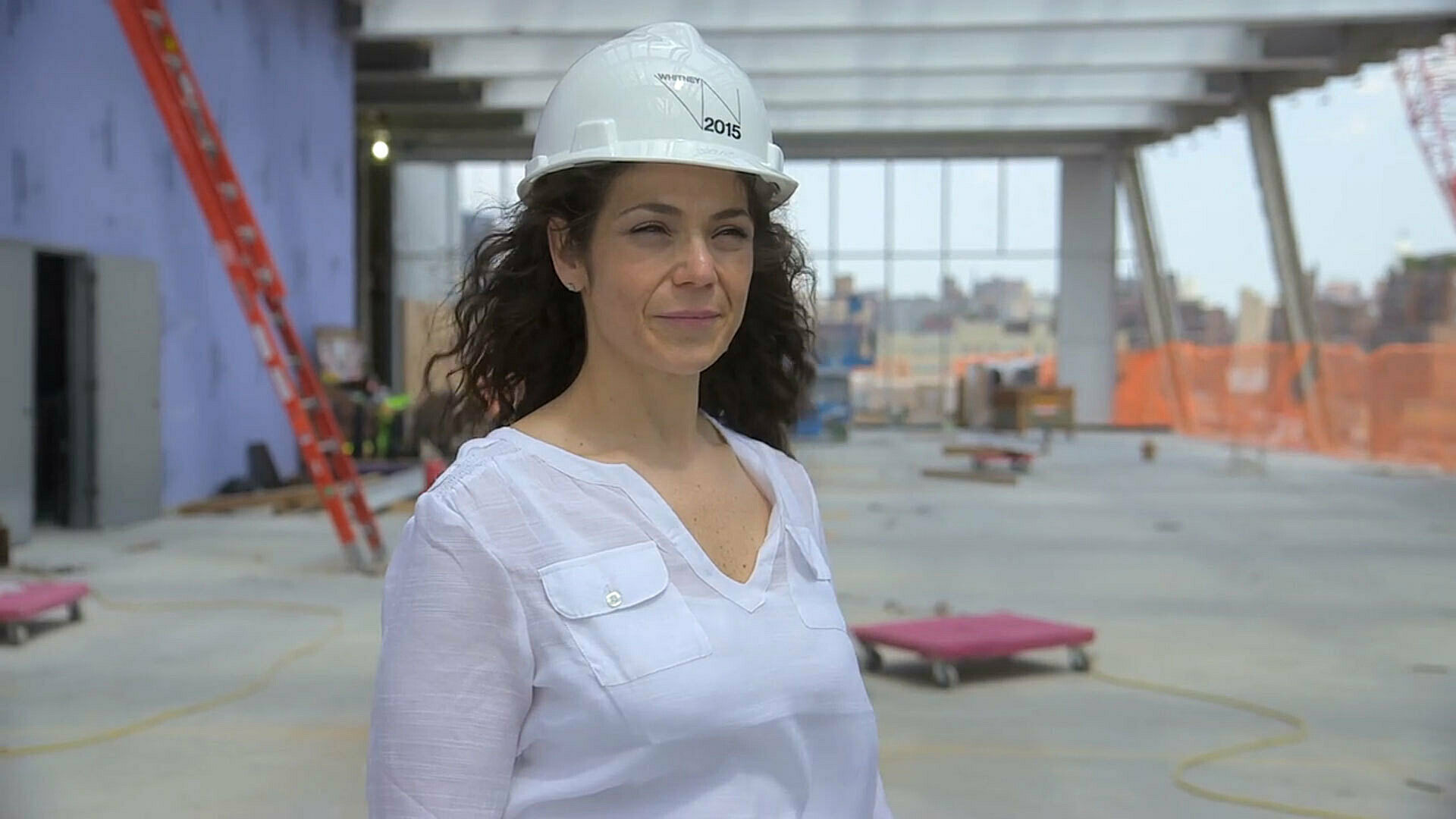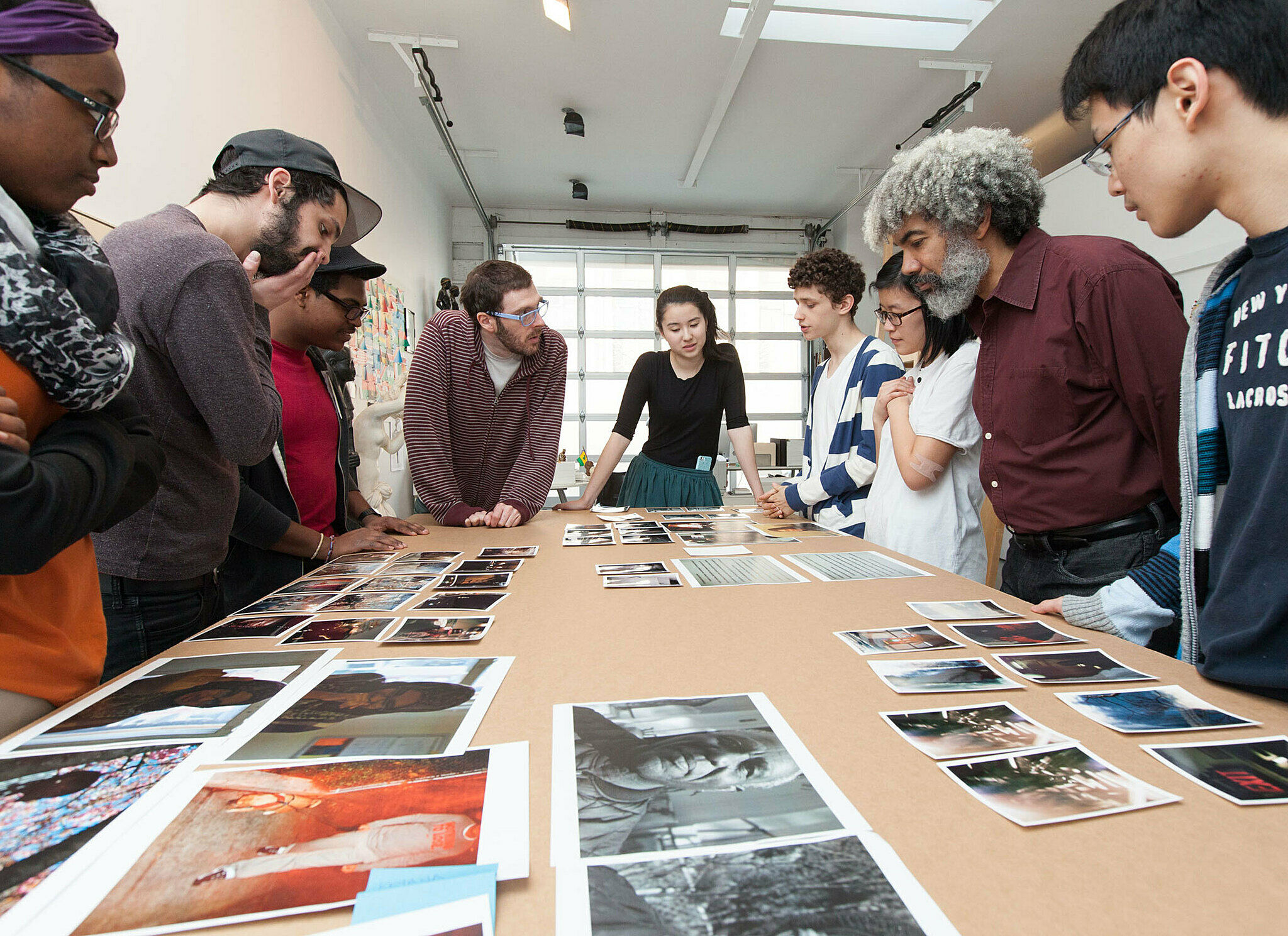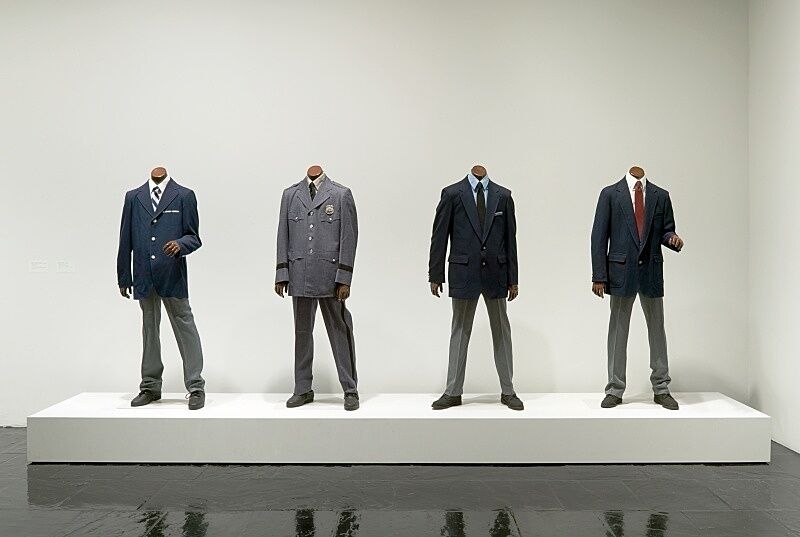Fred Wilson
1954–
For conceptual artist Fred Wilson, the museum is not just a place to visit or exhibit his work; it is also his palette and his subject. His work challenges the social codes that structure our experience of museums and exposes the historical misconceptions and implicit biases with respect to nonwhite cultures that underpin the practices of Western institutions. Wilson is perhaps best known for his museum projects in which he appropriates curatorial methods and strategies to rearrange and recontextualize existing collections, creating gallery installations that bring to light new histories, meanings, and artistic interpretations for the objects.
In Guarded View four headless black mannequins, feet planted firmly apart, are dressed as museum guards. Each figure wears a uniform, dating to the early 1990s, from one of four New York art museums: the Jewish Museum, the Metropolitan Museum of Art, the Whitney Museum, and the Museum of Modern Art. The mannequins underscore the institutional and public anonymity in which security personnel, often the only people of color present in the museum galleries, are tasked with protecting art and the public while remaining out of view. Having worked as a guard in his college museum, Wilson recognized what it felt like to be ignored by museum visitors: “When you are a museum guard, you are on display like everything else. You are standing there. You are silent. People walk by you. But unlike the artwork, you are invisible.” He challenges this dynamic by placing these ordinarily unnoticed figures at the center of our attention.
Introduction
Fred Wilson (born 1954) is an American artist of African-American and Caribbean heritage. He received a BFA from Purchase College, State University of New York. Wilson challenges colonial assumptions on history, culture, and race – encouraging viewers to consider the social and historical narratives that represent the western canon. Wilson received a MacArthur Foundation "genius grant" in 1999 and the Larry Aldrich Foundation Award in 2003. Wilson represented the United States at the Biennial Cairo in 1992 and the Venice Biennale in 2003. In May 2008, it was announced that Wilson would become a Whitney Museum trustee replacing Chuck Close.
Wikidata identifier
Q5496574
Information from Wikipedia, made available under the Creative Commons Attribution-ShareAlike License . Accessed December 18, 2025.
Introduction
American artist.
Country of birth
United States
Roles
Artist, conceptual artist, installation artist, photographer, sculptor
ULAN identifier
500231677
Names
Fred Wilson
Information from the Getty Research Institute's Union List of Artist Names ® (ULAN), made available under the ODC Attribution License. Accessed December 18, 2025.

